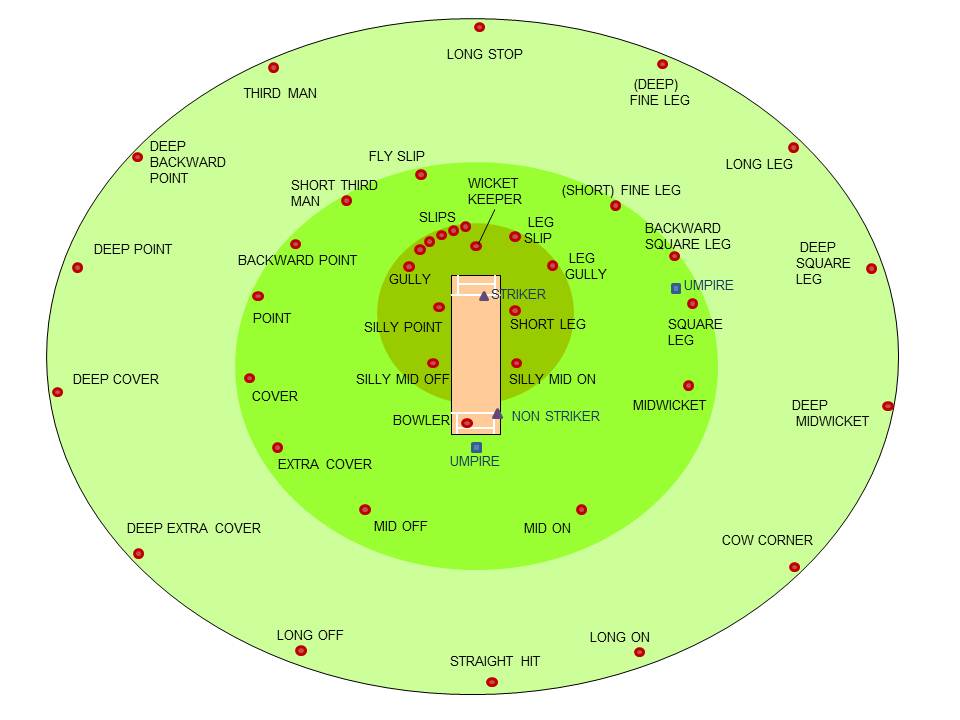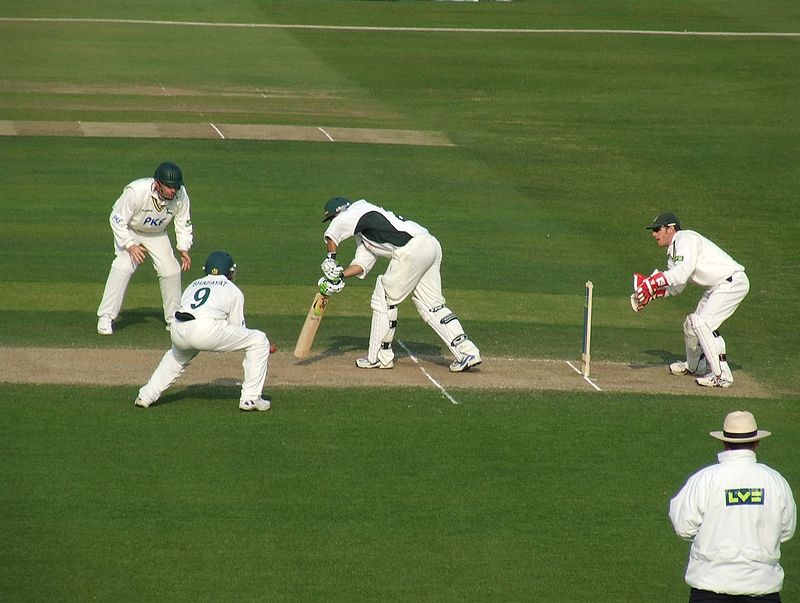Table of Contents
Cricket Fielding Positions

Cricket Fielding Positions: Fielding in the game of cricket was never given much weight at least till the arrival of the limited-overs variant. The limited-overs and T-20 form of the game have revolutionized the concept of fielding altogether so that there is now a new profound zeal for that aspect of the game. Although since inception, the game always had about 37 known cricket fielding positions on the field, yet only in recent times, the concept of specialist fielders for a position has developed quite recently.
Every nation playing the game these days attach great importance to fielding because with a good fielding unit, the outcome of a match can be influenced quite dramatically, as has been displayed more often these days. Therefore, we try to pick up on the knowledge of cricket fielding positions that can help in understanding the game more thoroughly and clear the air regarding the different positions and their significance.
Also Check : Fastest to 5000 Runs in ODI
List of all Cricket Fielding Positions
Fielding Positions In Cricket: A cricket team consists of 11 members out of which 1 is a bowler and 1 wicketkeeper. Therefore, at any point in time, there are 9 fielders that can be placed on the field. A captain of a team has the choice of placing these 9 fielders according to his preference and the order of play. If the batsmen is a right-handed player and we take a look from the bowler’s end, the following different placements that can be made.

- On and Off – The ‘on side’ is on the batsman’s right whereas the offside is on his left and therefore, the whole ground can be divided into two equal halves for understanding the fielding positions. In case of a left-handed batsman, all the positions will be the mirror image of the former.
- Slips – There are different types of slip positions, like the first slip, second slip, third slip, etc. These positions lie at an angle behind the batsmen on his off side one after the other. A leg slip and fly slip are positions that are placed on a batsman’s ‘onside’. They are so named because any ball that gives a slip to the batsman or catches an edge of the bat flows in that direction.
In test cricket, slip position is still considered to be one of the strategic cricket fielding positions and there are specialized slip fielders in almost all the major test-playing nations. This shows the great importance that is attached to slip fielding. A particular level of alertness and some sort of expectancy always has to be there in a dedicated slip fielder. In the shorter format of the game too, this position, especially the first and second slips generally comes into play and a fielder is placed.
- Covers – This has a very generalistic meaning and the name is not much related to the game’s strategy. the position has been named due to the fact that a fielder stands at the place where the second pitch is kept covered! The area is particularly on the offside of the batsman and there are different types of them that include cover point, deep cover, extra cover or deep extra cover.
Also Check : https://sportsroid.com/spin-bowling-variations-off-spin-leg-spin-bowling-tips-techniques/

From the cover point, if the fielder stands a little wider, it is called as “extra cover”. The deep cover is more towards the boundary area whereas deep extra cover refers to a player standing deep into the extra cover region. This cricket fielding position is also of much significance in all types of the game and many runs may flow through them.
- Square – These cricket fielding positions on the field are at an angle of about 90 degrees on the on side of a batsman. Advertently or inadvertently, much run may flow through these areas during the middle overs of a game and hence it is important to carefully set fielders in this region. It usually consists of the square leg, short backward square leg, deep square leg or the deep backward square leg, etc.
The square leg is at 90 degrees of the batsman whereas short backward square leg is somewhat similar to the former but behind the perpendicular line of the batsman. Similarly, the deep square leg is also like the square leg but being stationed on the boundary. The deep backward square leg is in line with the short backward square leg but somewhat behind the perpendicular line of a batsman.
- Silly Point – It is so-called due to the strong chances of being hit by the batsman’s strokes as these are located very close to the batsman. Silly mid-on is located on the on side halfway between the pitch and very close to the batsman’s leg side. Similarly, silly mid-off is just symmetrically located on the offside of the pitch. Fielders are usually positioned here for catching or exerting pressure on the opponent. It must also be mentioned here that fielders must wear needed protective gears while fielding at these locations.
- Mid-wicket – Mid-wicket is a position somewhat on the middle line of square leg and mid-on. The fielder placed over here should have enough anticipation skills and athleticism so that chases can be fruitful. Similarly, there is deep mid-wicket that is in line with the mid-wicket and placed on the boundary

- Fine Leg – When shot happens from the inside part of the bat, it is said to run ‘fine’ on the ‘on side’. A fine leg fielder stands behind the wicketkeeper on the boundary line to stop the balls that are hit ‘fine’. It also has short fine leg and deep fine leg, the only difference between the two is that the former is within the 30-yard circle whereas the latter is on the boundary.
- Mid and long Positions – Mid positions are located very near to the bowler and are classified as mid-on and mid-off. Mid-on refers to the location on the ‘on side’ from the bowler and similarly, mid-off is on the offside. The long positions include the long-on and long-off. These are in line with the mid-on and mid-off, only that they are stationed at the boundary.
Also Check : https://sportsroid.com/list-of-batsmen-who-have-faced-most-balls-in-test-cricket/
Apart from all these major positions, there are also some other cricket fielding positions like the all-important wicketkeeper, point, gully, and sweeper. All the said positions apart from the wicketkeeper are on the offside and a fielder may be stationed at a captain’s or bowler’s discretion. There is also a third man fielder these days that is located on the ‘on side’ behind the wicketkeeper. In fact, in contemporary limited over cricket, this fielding position is of much importance.
